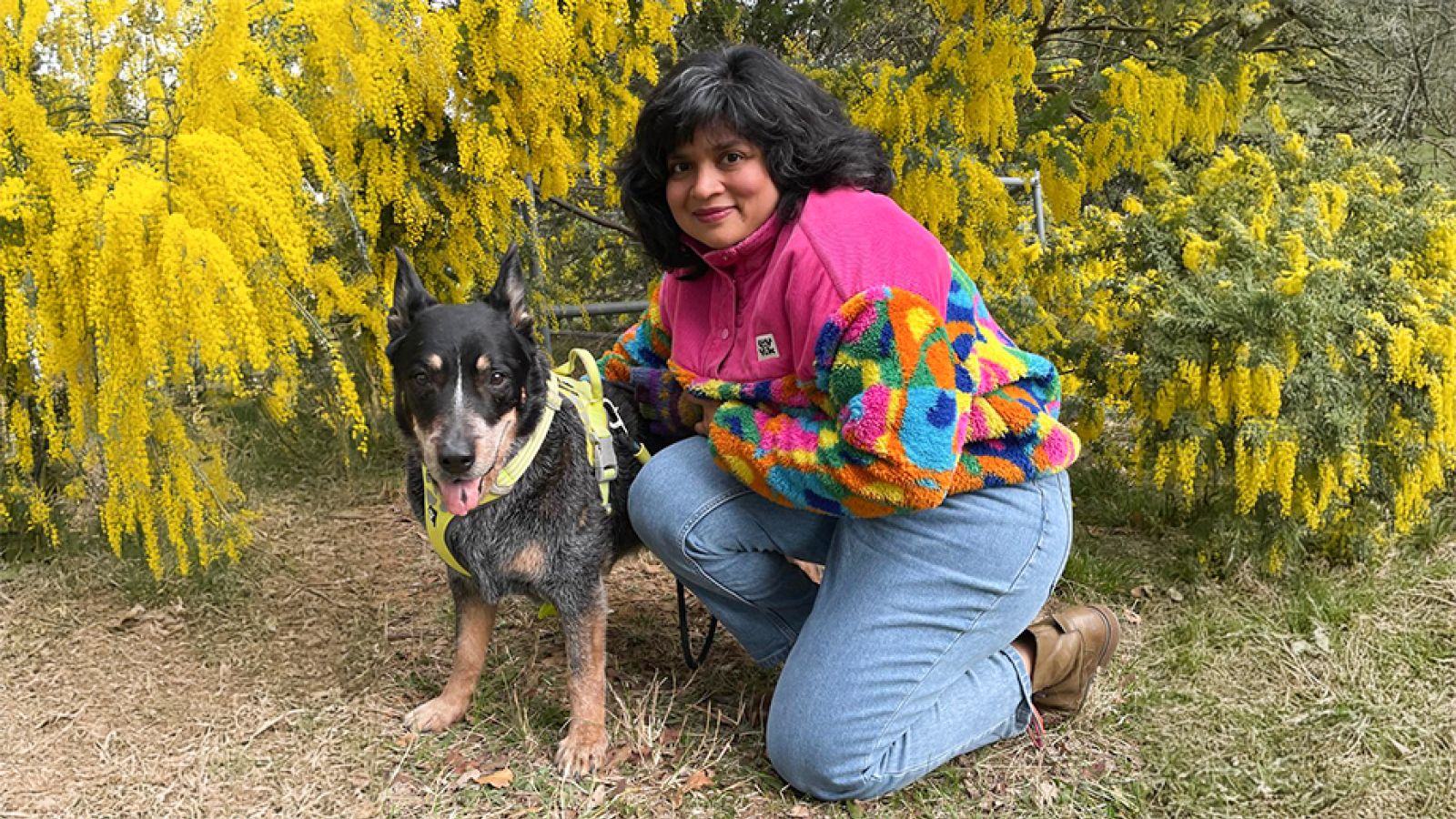Meet Dr V. Chitra co-organiser of the PossumLab

Image supplied, extended using AI Photoshop 2025.
Article by Phillis Zeng.
Dr V. Chitra joined the ANU School of Archaeology and Anthropology in February 2024 as a new lecturer in Anthropology. With her passion and expertise in visual arts and science and technology, Chitra brings creative approaches to environmental anthropology.
Chitra received her undergraduate degree in architecture in 2004 and a master’s in visual communication in 2006. Talking about her educational background and its impact on her later research, “I was taught to see drawing as a critical way of thinking and seeing, rather than thinking of it as illustrating something that we see directly,” she says.
“After graduating with my master’s, I wanted to draw research-based comics. So, I spent a year conducting an independent project on a flood that happened in Mumbai in 2005 and ended up going to a talk by an anthropologist.” Inspired by the talk, Chitra decided to explore anthropology. Ultimately, she completed a PhD in Anthropology at Johns Hopkins University in 2015.
Chitra’s research intersects her three biggest interests: environmental anthropology, science and technology, and visual studies. Her new book, Drawing Coastlines: Climate Anxieties and the Visual Reinvention of Mumbai's Shore has just been released. Using the format of comics, Chitra investigates how technical images, such as maps and plans, are used in environmental management. She looks at how they are constructed and how they remake Mumbai’s coast.
“When I think about environmental systems, I’m very interested in large-scale management systems and planning, especially the technical ways of governing the environment. In this book, I look closely at how the scientific images for environmental governance like maps and plans are drawn.
“I want to show that even though these images are produced with satellite technology, they are not objective and immediate pictures of the landscape. Rather, they are constructed via a complex process of collaborative work and interpretation and reinterpretation of data. These maps and plans are the results of how people draw the landscape, and they also have changing effects on the landscape.
“The other thing I want to emphasise is the ways in which environmental management policies have evolved with development of visual technologies and practices, including satellite technology. As we get clearer images and much more information about the coasts, tighter controls are put in place that can hinder the flexibility of ecological formations that the landscape needs. That leads to the question of how we use technology to determine what the coasts should be like. How do we think about community participation, especially when there are Indigenous communities affected? And how does one live with the environment and other species? I hope readers will reflect on these questions with me.”
As the book’s sole illustrator, Chitra admits that it was a challenge, and it took her a long time to finish, but she will keep exploring nontraditional, especially nontextual, research in her next projects. Chitra says, nontextual research is not much different from traditional research. “I’m interested in communicating certain concepts in a way that is relevant to certain problems, no matter if it is to write or draw these concepts. They are just different media in which concepts come to life in different ways. So every project will take its own distinct form. For example, if I need to show certain sounds or environments in my research that are difficult to put into words, drawing could be a way to do that.” She explains.
“I think the scholarly community is a lot more open to nontraditional research nowadays and formats like comics are emerging, though they may not be mainstream in academia yet. As we start considering more about how research can be done through different media, I hope there will be more research projects taking innovative formats so that they won’t be called ‘nontraditional’ anymore but become forms of ordinary, traditional research.”
Upholding such beliefs and passion, Chitra established the “PossumLab” with the support of her colleagues in the school. With the lab, Chitra, and her colleague Dr Adam Sargent, are working on establishing a space and network for interested researchers and students to engage in visual (and other nontextual) research, draw or read comics, and jointly consider how comics and other media could be incorporated into their research. The PossumLab has organised monthly comics reading and online discussions since July this year with members from various disciplines and backgrounds.
Outside of academia, Chitra also loves sketching her everyday life, going hiking, reading science fiction and murder mysteries, stitching, and hanging out with her dog, Bubbles.
Read more about Dr V. Chitra’s work here.
If you are interested in joining the PossumLab, please contact soaapossum@gmail.com. (Members are not required to have a project. Anyone is welcome to join and read comics with a group of students and faculty members).